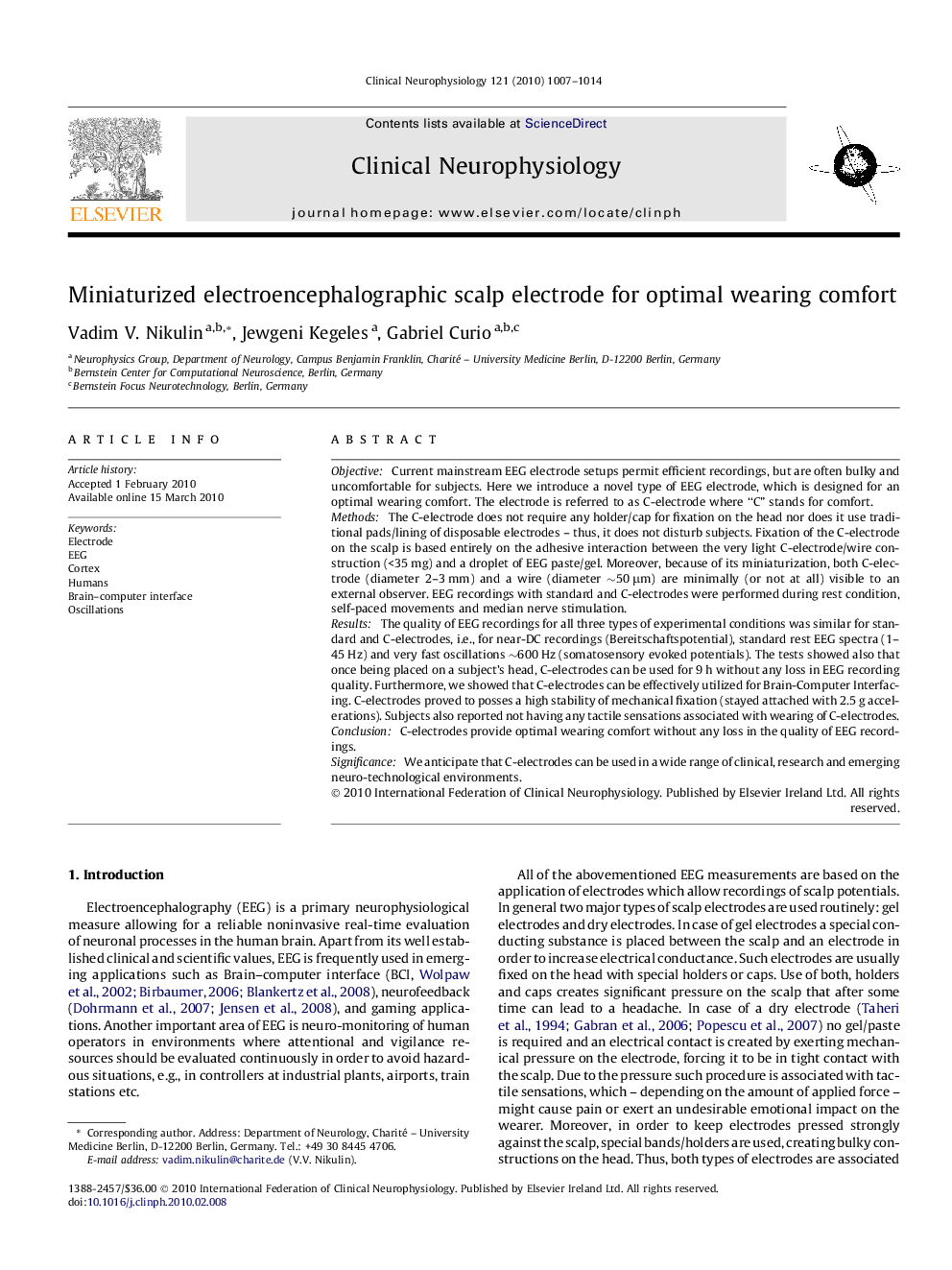| Article ID | Journal | Published Year | Pages | File Type |
|---|---|---|---|---|
| 3045923 | Clinical Neurophysiology | 2010 | 8 Pages |
ObjectiveCurrent mainstream EEG electrode setups permit efficient recordings, but are often bulky and uncomfortable for subjects. Here we introduce a novel type of EEG electrode, which is designed for an optimal wearing comfort. The electrode is referred to as C-electrode where “C” stands for comfort.MethodsThe C-electrode does not require any holder/cap for fixation on the head nor does it use traditional pads/lining of disposable electrodes – thus, it does not disturb subjects. Fixation of the C-electrode on the scalp is based entirely on the adhesive interaction between the very light C-electrode/wire construction (<35 mg) and a droplet of EEG paste/gel. Moreover, because of its miniaturization, both C-electrode (diameter 2–3 mm) and a wire (diameter ∼50 μm) are minimally (or not at all) visible to an external observer. EEG recordings with standard and C-electrodes were performed during rest condition, self-paced movements and median nerve stimulation.ResultsThe quality of EEG recordings for all three types of experimental conditions was similar for standard and C-electrodes, i.e., for near-DC recordings (Bereitschaftspotential), standard rest EEG spectra (1–45 Hz) and very fast oscillations ∼600 Hz (somatosensory evoked potentials). The tests showed also that once being placed on a subject’s head, C-electrodes can be used for 9 h without any loss in EEG recording quality. Furthermore, we showed that C-electrodes can be effectively utilized for Brain-Computer Interfacing. C-electrodes proved to posses a high stability of mechanical fixation (stayed attached with 2.5 g accelerations). Subjects also reported not having any tactile sensations associated with wearing of C-electrodes.ConclusionC-electrodes provide optimal wearing comfort without any loss in the quality of EEG recordings.SignificanceWe anticipate that C-electrodes can be used in a wide range of clinical, research and emerging neuro-technological environments.
